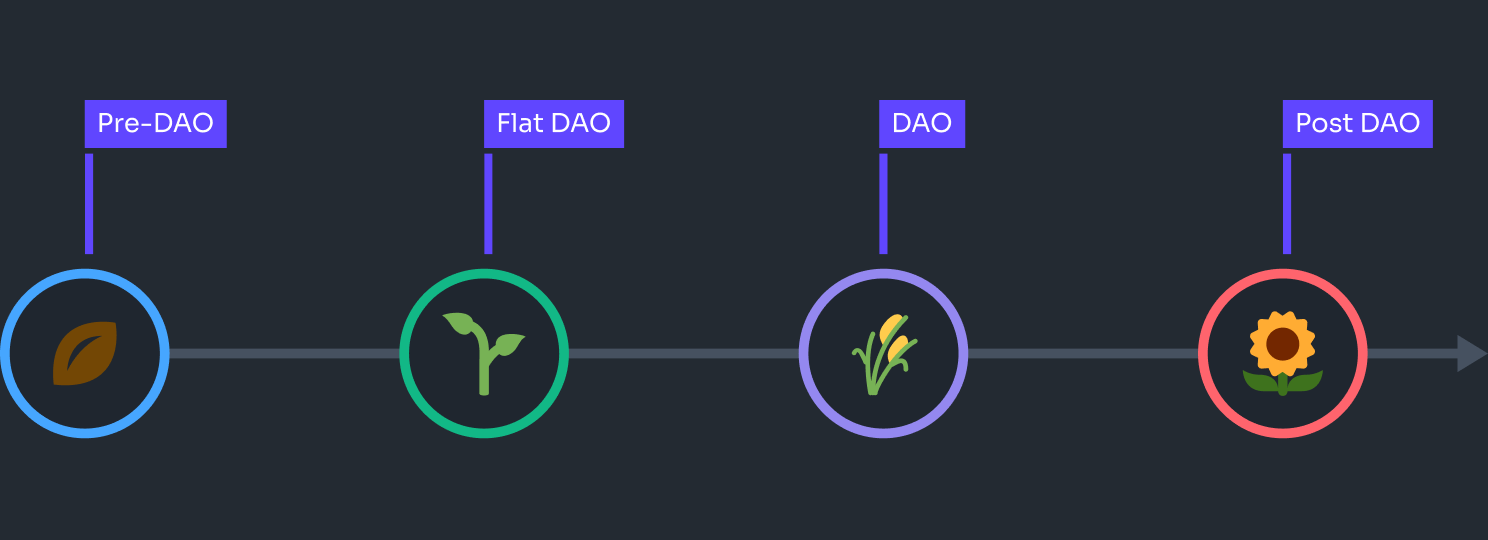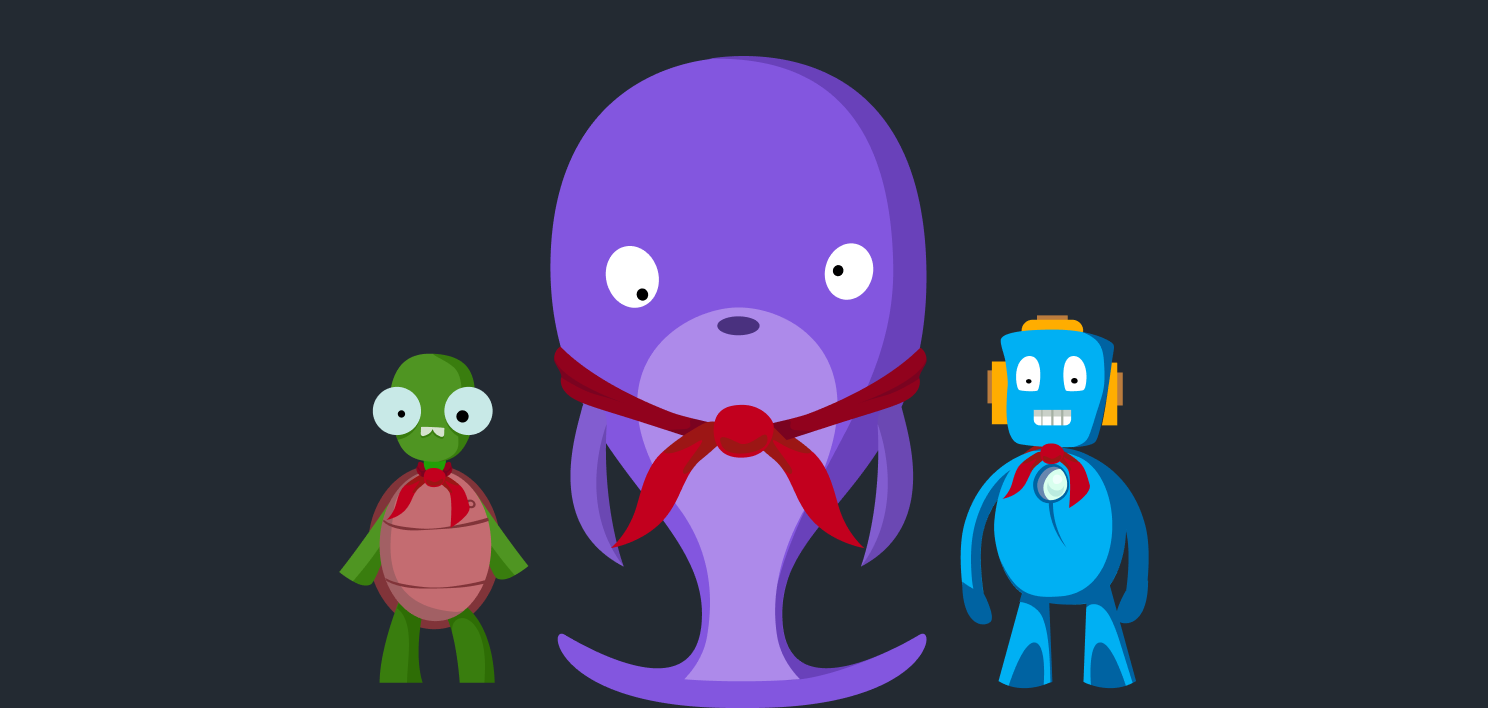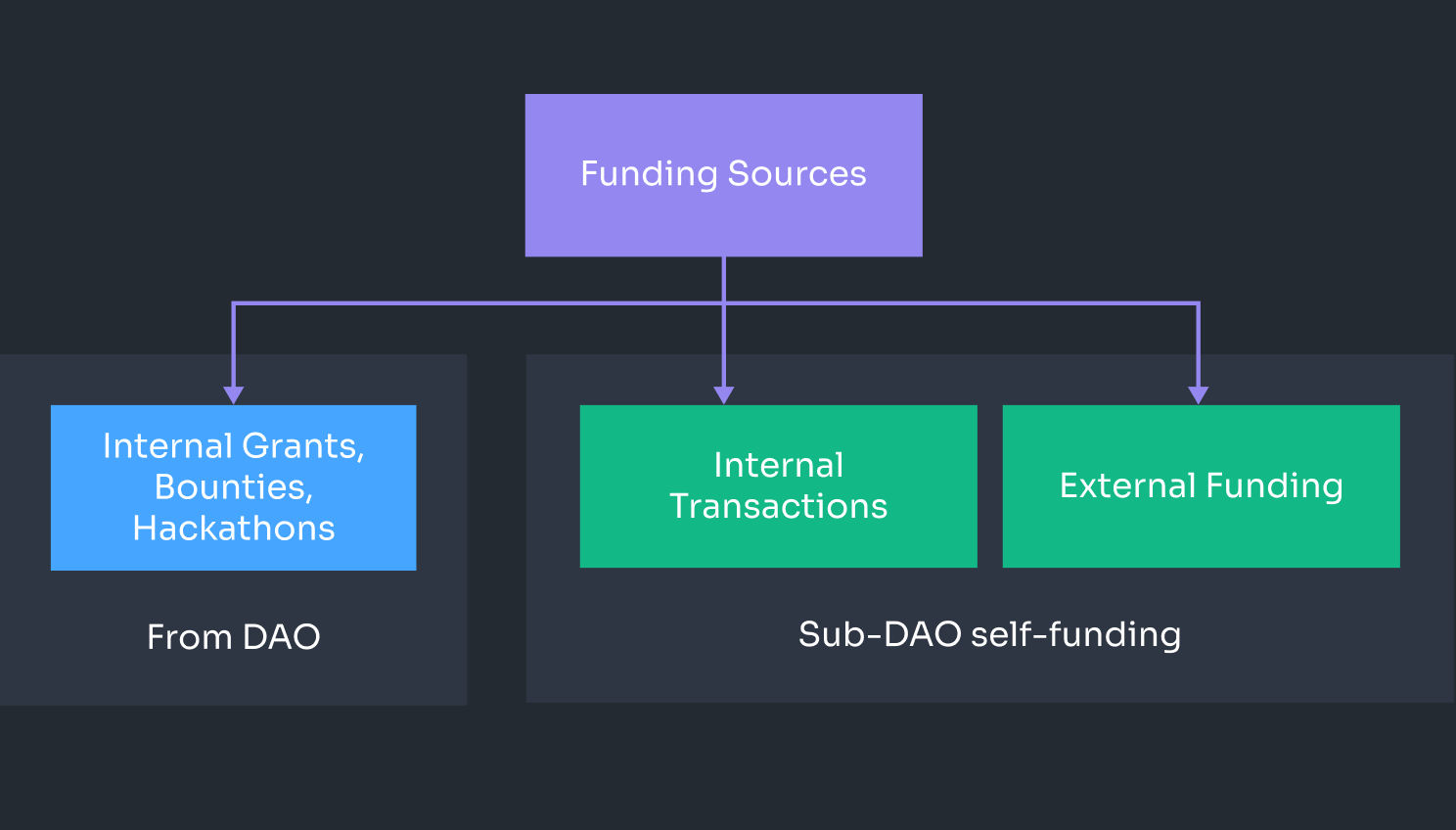Operating a Decentralized Autonomous Organization – What is the DAO lifecycle? What are sub-DAOs? How are they created? How do they operate with governance and funding?
Following our previous article, ”DAOs Explained,” we will take it a step further and dive into the organizational structure of a DAO. We are covering the typical DAO lifecycle and sub-DAO operations. To access the video webinar on this content, watch below.
DAO Lifecycle
This article reviewed fifteen popular DAOs and noted their evolution, structure, and operations. Some DAOs exist with a different lifecycle, but today the discussion will be around the process of the majority.
Regarding the DAO lifecycle, there are four main stages:
- Pre DAO
- Flat DAO
- DAO
- Post DAO

Pre DAO
Pre DAO is the stage before DAO creation.
The first component of the pre DAO stage is the project launch. Whether the product is a DeFi project, new protocol or anything else, there must be a project before a DAO. The product is typically initiated and developed by its founders. During this step, the project acts similarly to a traditional business, making decisions top-down while relying on a centralized authority. Transparency during this period is relatively low, with tasks, goals, KPIs, and OKRs hidden internally.
Once the concept of a project is shaped, founders and early members work to attract an audience. This typically involves new Twitter followers and Discord members as users become excited with the idea of the new project. Transparency is increased around this point, but the messaging is one-way, with the followers acting as an audience. At this time, decision-making is still centralized, with the community serving as advisors and a source of feedback.
Once a product is built and a community is developed, the project is ready for the DAO launch. This step occurs once (a) a solid group of highly engaged community members is formed and (b) the core team is ready to start delegating some governance rights to this community in exchange for funding. At this point, the founding team and the community work together to form the future DAO, rules, vision, goals, and structure.
The founding team and community work together on the DAO manifesto or constitution. Among others, the following mechanics and topics should be covered:
- Mission, Goals, and Value
- Tokenomics
- Governance
- Treasury Management
- Tools and platforms
- Structure of DAO
- Decision-making process
- Decentralization plan and timeline
- Sub-DAO, including sub-DAO withdrawal from the DAO
- Minority token holders’ voting capabilities
The DAO launch or Token Generation Event (TGE) finalizes this stage.
Flat DAO
Once the DAO is created, and in early-stage development, it takes on a flat structure. The flat design comes from the fact that there are no layers to the DAO, with each member having the same role.
The founders are mainly responsible for project development, the roadmap and strategy. Even though the DAO is in control, the lack of organization leads to founders continuing to take on responsibility. The community begins to govern the DAO treasury but cannot manage operations. At this stage, the motivated community members start to contribute to the DAO.
Once the community grows, coordination becomes difficult without hubs of specialization. This is when small departments begin to arise as Working Groups/Squads/Sub-DAOs. These groups can be implemented top-down from the founders or bottom-up from engaged community members. Departments may include internal structure, governance, leadership and treasury, but usually, they have a flat structure. They are also responsible for reporting to the DAO, requesting budgets and offering KPI data.
DAO
As the DAO matures, sub-DAOs begin to form and complete tasks within the DAO. At this point, founders become a part of the community as one department/working group/sub-DAO. This group operates like any other sub-DAO, without preferred status. If the DAO agrees, the founding team may be rotated, replaced or dismissed based on community decision.
From there, sub-DAOs continue to mature into a more complex body. Sub-DAOs begin to take on more independence in operations and building funding sources outside the DAO.
The DAO is fully functional and is genuinely a decentralized autonomous organization at this stage.
Post DAO
Once the DAO is well established, one or many sub-DAOs may become independent and stop reporting to the DAO. The interaction can be in the form of a partnership of equal bodies. A great example of this separation is Gnosis DAO and its side project CowSwap, which is now fully independent. It is crucial to have a pre-defined mechanism of sub-DAO withdrawal to keep this process painless and secure stakeholders’ interests.
Sub-DAOs
Throughout the DAO lifecycle, there is a lot of focus on sub-DAOs. It’s time to address the question, “What is sub-DAO?”

Sub-DAOs are a form of organizational structure within a DAO. Instead of following a hierarchical management model, sub-DAOs operate completely autonomously while remaining aligned with the parent DAO or DAO. They are more along the lines of subsidiaries. At the very least, sub-DAOs are multi-sig organizations with social governance but can be much more.
Three overarching concepts are guiding a sub-DAO:
- Autonomy, sub-DAOs have their treasury and internal governance.
- Alignment, sub-DAOs have values and goals that align with the DAO.
- Accountability, sub-DAOs report to their DAO.
What is the size of a productive team? Jeff Bezos says, “We try to create teams that are no larger than can be fed by two pizzas,” The smaller the group, the better the collaboration, internal relations and project pace.
Creating
Creating a sub-DAO begins with finding a problem to solve within the DAO ecosystem. An active member will publish a proposal with all required information regarding the new sub-DAO. The sub-DAO should bring forward six key points in the proposal:
- Vision
- Target
- Budget
- Milestones & Timelines
- Reporting
- Steward Responsible
Once the community accepts the proposal, the sub-DAO can begin to operate and use the requested funds.
Focus
There are no limitations to which business area a sub-DAO can operate. It’s up to the DAO and sub-DAO to decide what objectives need to be accomplished.
But based on a survey conducted by Gitcoin DAO, the top 5 sub-DAO roles are as follows:
- Community building
- Governance
- Operations
- Marketing
- Development
There is also room for education, onboarding and business development in a DAO. A sub-DAO can operate under any domain as long as it has the DAOs approval.
Governance
Internal governance is up to each sub-DAO. All sub-DAOs take care of their internal governance, compensation, and allocation of responsibilities (central leadership is encouraged when practical).
Sub-DAOs inherit all DAO attributes and act as decentralized organizations within their scope.
To operate effectively, a sub-DAO should have two sets of rules in place:
- General rules
- Domain-specific rules
General rules are intended to counteract tendencies toward monocentricity; they include rules that provide institutional mechanisms for separation of power, monitoring, conflict resolution, appeal, system entry and exit. - in other words, basic governance rules.
Domain-specific rules are tailored to the needs of particular domains and often supply the mechanisms needed to effectively self-organize. These are the rules that provide explicit instruction to the sub-DAO.
Leadership
When a sub-DAO submits a proposal for funding from the DAO, it must select a leader. This leader is responsible for the sub-DAO formation, reporting and execution of tasks. This role is typically turned over periodically but is not a requirement.
Sub-DAO leader is typically responsible for:
- Management
- Strategy & Goal setting
- Roadmap
- Execution
- Contributor hiring
- DAO wide communication
- Reporting
Funding
Generally speaking, there are two ways for a sub-DAO to get funding.
The first is more traditional - to get funding from DAO. It can be in the form of a proposal, internal grants, or hackathon bounties. This is the simple approach - DAO gives money, and subDAO provides services and reporting for the funds.
Another approach is self-funding. The sub-DAO can perform services for other sub-DAOs and get paid directly or provide services externally. For example, a design sub-DAO can act as an internal studio and work for multiple DAOs.
Eventually, a sub-DAO can evolve into an independent business unit and be less dependent on its original DAO.

Reporting
Once the sub-DAO gets funding from DAO, it is responsible for reporting its progress and reaching milestones. The sub-DAO’s progress can be reported in a community call, dashboard, presentation or any other format, and these reports can be issued weekly, monthly, quarterly or by accomplishment.
Now that we’ve discussed the DAO lifecycle and sub-DAO organization, let’s review a DAO in action and break down its structure.
Example: DXdao
DXdao functions in teams of contributors that are referred to as squads. Contributors within each squad coordinate responsibilities amongst themselves to further the interests of the DXdao community and its products.
There are 7 Squads within DAO:
- Business Development
- Ecosystem and Product Development
- Governance
- Marketing / Communications / Community
And three product-specific squads.
DXdao has five regular weekly calls related to BizDev, Development, Governance, Community, and Product Strategy.
Squads are all a part of the main DAO, backed by the DXdao token.
Each squad has a squad leader that is the point of contact for inter-squad coordination and new contributors. The squad leader takes on an organizational role in road mapping strategy and tracking contributors’ progress within the squad. The intention is to have rotating squad leaders.



